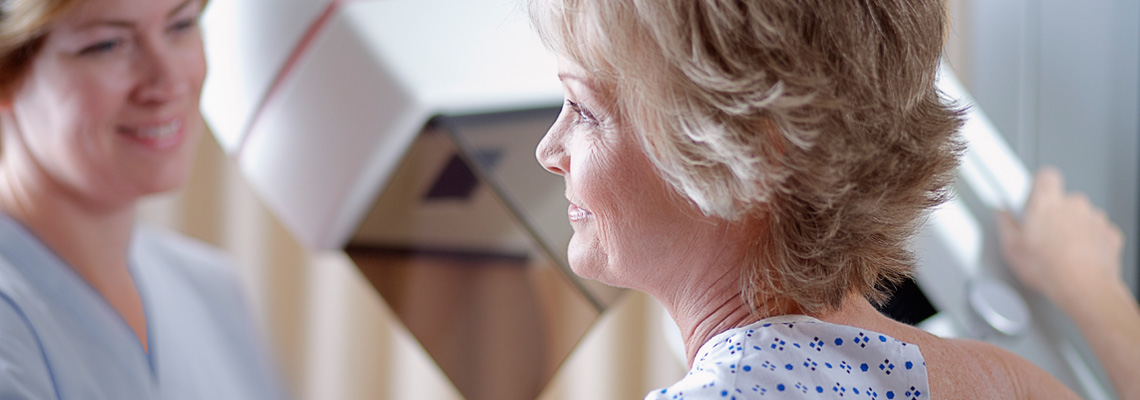Breast Cancer Prevention & Screening
U.S. PATIENTS:713.790.3333
Schedule Your Mammogram

All women are at risk for breast cancer, and this risk increases with age.
Fortunately, screening can help catch breast cancer early when it’s easiest to treat. It’s why following breast cancer screening guidelines is a critical step in taking control of your health.
Our Approach to Breast Cancer Prevention & Screening
Experts at our Houston Methodist Breast Care Centers use the latest technology to detect cancer before lumps can be felt or other breast cancer symptoms appear — offering a range of screening options tailored to each individual’s breast cancer risk and personal needs.
Our Breast Care Centers offer:
- Advanced 3D mammogram technology
- Board-certified radiologists with the expertise required for early cancer detection
- Locations throughout the greater Houston area
- Continuity of care to track your health history over time
- Acceptance of most major insurance plans
Understanding the Breast Cancer Screening Options
Early detection of breast cancer is crucial, and mammography is the gold standard of breast cancer screening. Depending on individual factors like breast density and breast cancer risk, additional types of imaging also may be used to screen for breast cancer. Understanding these options helps you make informed decisions about your health.
Mammography
A mammogram is a specialized X-ray of the breast that can show small, early-stage breast cancers. It’s a key component in breast cancer screening, playing a vital role in early diagnosis.
At Houston Methodist, we offer 3D mammograms (breast tomosynthesis), a more advanced form of breast imaging that offers improved detection, better visualization and fewer false positives than its 2D counterpart.
Screening mammograms are recommended annually starting at age 40 for women with average risk of breast cancer. Those who are at higher risk may need earlier screening and additional types of imaging.
If a screening mammogram shows an abnormal result, a diagnostic mammogram will be needed. During a diagnostic mammogram, additional views of the breast are taken as the radiologist reads the mammogram in real-time.
Breast Ultrasound
A breast ultrasound creates detailed pictures of the breast using sound waves instead of radiation.
It may be used in addition to a screening mammogram for women who have dense breast tissue or are at higher risk of developing breast cancer. A breast ultrasound also might be used during follow-up imaging to more closely examine unusual findings uncovered on a screening mammogram.
Breast Magnetic Resonance Imaging
Breast magnetic resonance imaging (breast MRI) is a minimally invasive technique that uses magnetic fields and radio waves to create detailed images of breast tissue. It is often recommended in addition to a screening mammogram for high-risk individuals.
Contrast-Enhanced Mammogram
A contrast-enhanced mammogram (CEM) is similar to a traditional mammogram but incorporates the use of iodinated contrast dye to help identify breast cancer. CEM may be used to screen for breast cancer in people who are at higher risk or those have dense breast tissue.
Molecular Breast Imaging
Molecular breast imaging (MBI) is a specialized imaging technique that uses a small amount of radioactive dye to detect cancer cells. MBI may be used in combination with a screening mammogram for women who have dense breast tissue, since the denser the breast tissue, the more challenging it becomes to read a mammogram.
MBI also may be used if a screening mammogram and breast ultrasound show abnormal results, and more detailed images of breast cells are needed.
Clinical Breast Exam
A clinical breast exam is a physical examination of the breasts performed by a health care professional, such as a doctor or nurse. This exam can help to identify lumps or other abnormalities that require further investigation.
During the exam, the doctor or nurse will check both breasts and the underarm areas for any changes in size, shape, skin texture or the presence of lumps.
Reducing Your Risk of Breast Cancer
Lowering your risk of breast cancer starts with knowing the factors that can increase it.
Breast cancer risk is influenced by factors that can be changed, as well as ones that can’t. It’s important to be aware of both so you can understand your modifiable and non-modifiable risk.
Ways to reduce breast cancer risk include:
- Maintaining a healthy weight
- Eating a well-balanced diet
- Exercising regularly
- Limiting alcohol consumption
- Not smoking
- Understanding your personal risk of breast cancer and following recommended screening and prevention guidelines
